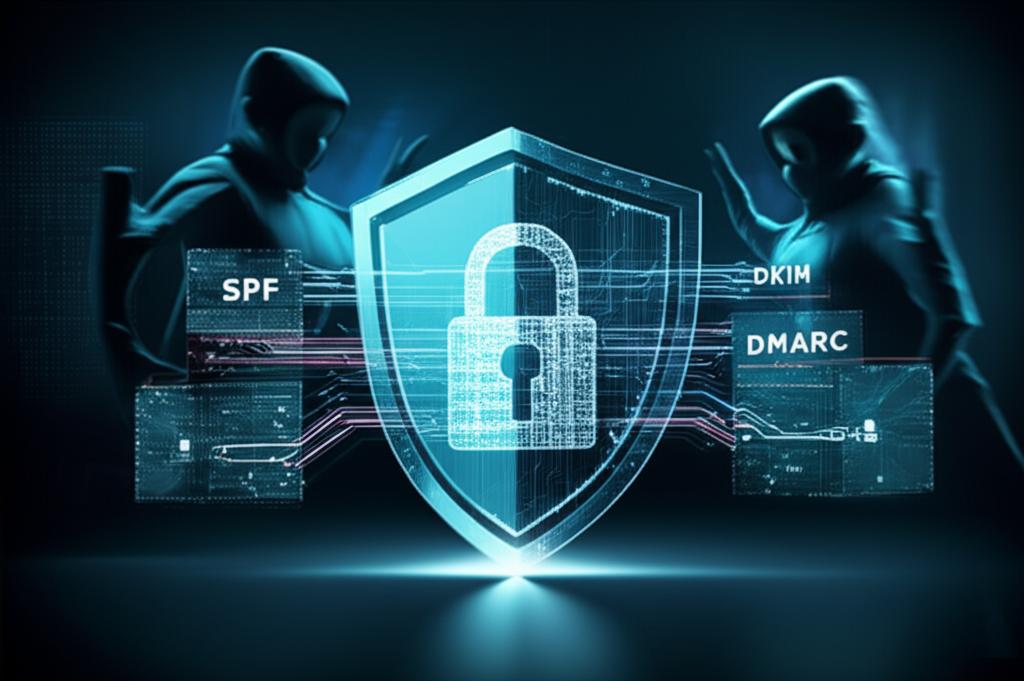Mastering Email Authentication: Your Ultimate Guide to Digital Trust
What is Email Authentication?
In today’s digital landscape, where email remains a primary mode of communication, ensuring the authenticity and integrity of messages is paramount. This is where Email Authentication comes into play a critical set of technical standards designed to verify that an email truly originates from the domain it claims to be from, and that its content hasn’t been tampered with in transit.
Think of Email Authentication as the digital equivalent of a customs inspection for your emails. It’s a foundational layer of security that helps build trust, protect your brand, and dramatically improve email deliverability by preventing malicious actors from impersonating your domain.
Why is Email Authentication Crucial for Your Business?
Without proper Email Authentication, your domain becomes an easy target for nefarious activities. Here’s why it’s not just beneficial, but absolutely essential:
- Combating Phishing & Spoofing: Attackers often “spoof” email addresses to impersonate legitimate organizations, tricking recipients into revealing sensitive information. Email Authentication mechanisms make this much harder.
- Protecting Brand Reputation: When your domain is used for spam or phishing, your brand’s credibility takes a severe hit. Authentication safeguards your reputation.
- Ensuring Deliverability: Email service providers (ESPs) and spam filters heavily rely on authentication records to determine if an incoming email is legitimate. Unauthenticated emails are far more likely to land in spam folders or be rejected entirely.
- Building Trust: Recipients are more likely to open and engage with emails they trust are genuinely from your organization.
The Core Pillars of Email Authentication
Email Authentication is primarily built upon three key protocols that work in tandem to establish sender legitimacy:
1. Sender Policy Framework (SPF)
SPF is a DNS record that specifies which mail servers are authorized to send email on behalf of your domain. When a recipient’s mail server receives an email, it checks the sender’s domain’s SPF record to verify if the sending IP address is on the approved list. If not, the email might be flagged as suspicious or rejected.
2. DomainKeys Identified Mail (DKIM)
DKIM adds a digital signature to outgoing emails, similar to a tamper-proof seal. This signature is generated using a private key on the sending server and can be verified by the recipient’s server using a public key published in your domain’s DNS records. DKIM ensures that the email content hasn’t been altered since it left the sender’s server and that the sender genuinely owns the domain.
3. Domain-based Message Authentication, Reporting & Conformance (DMARC)
DMARC builds upon SPF and DKIM by instructing recipient mail servers on what to do if an email fails authentication checks (e.g., quarantine, reject, or simply monitor). It also provides reporting capabilities, giving domain owners valuable insights into who is sending email on their behalf and how well their authentication is performing. DMARC policies help enforce your Email Authentication efforts.
- None (p=none): Monitor all failed authentication attempts without taking action. Ideal for initial implementation.
- Quarantine (p=quarantine): Instructs recipient servers to place emails failing authentication into the spam/junk folder.
- Reject (p=reject): The strongest policy, instructing recipient servers to outright reject emails that fail authentication.
How SPF, DKIM, and DMARC Work Together for Robust Email Authentication
While each protocol offers a layer of protection, their true power lies in their combined effort. SPF verifies the sender’s IP, DKIM verifies the email’s integrity and sender’s domain ownership through cryptography, and DMARC acts as the policy enforcement and reporting layer. Together, they create a comprehensive Email Authentication framework that significantly reduces the risk of email-based fraud and boosts deliverability.
Unlocking the Benefits of Robust Email Authentication
Implementing a strong Email Authentication strategy yields numerous advantages:
- Superior Deliverability: Emails are more likely to reach the inbox, not the spam folder.
- Enhanced Security: Protects your brand and recipients from phishing, spoofing, and malware.
- Improved Brand Reputation: Maintains trust and credibility with customers and partners.
- Valuable Insights: DMARC reports offer data on email traffic, helping identify unauthorized senders.
- Regulatory Compliance: Helps meet various data protection and privacy regulations.
Implementing Email Authentication: A Step-by-Step Approach
While the process can seem technical, setting up Email Authentication is a manageable task:
- Assess Your Sending Sources: Identify all legitimate services and servers sending email on behalf of your domain.
- Configure SPF Records: Update your domain’s DNS to include all authorized sending IPs.
- Configure DKIM Records: Generate DKIM keys for your sending services and publish the public keys in your DNS.
- Implement DMARC: Start with a “p=none” policy to monitor, then gradually move to “quarantine” or “reject” as confidence in your authentication grows.
- Monitor and Refine: Regularly review DMARC reports and adjust your records as needed to ensure optimal performance.
Conclusion: Mastering Email Authentication for Digital Trust
In an era rife with cyber threats, strong Email Authentication is no longer optional it’s imperative. By diligently implementing and maintaining SPF, DKIM, and DMARC, organizations can significantly enhance their email security, protect their brand, and foster greater trust with their audience. Take the proactive step to master Email Authentication and safeguard your digital communications today.







